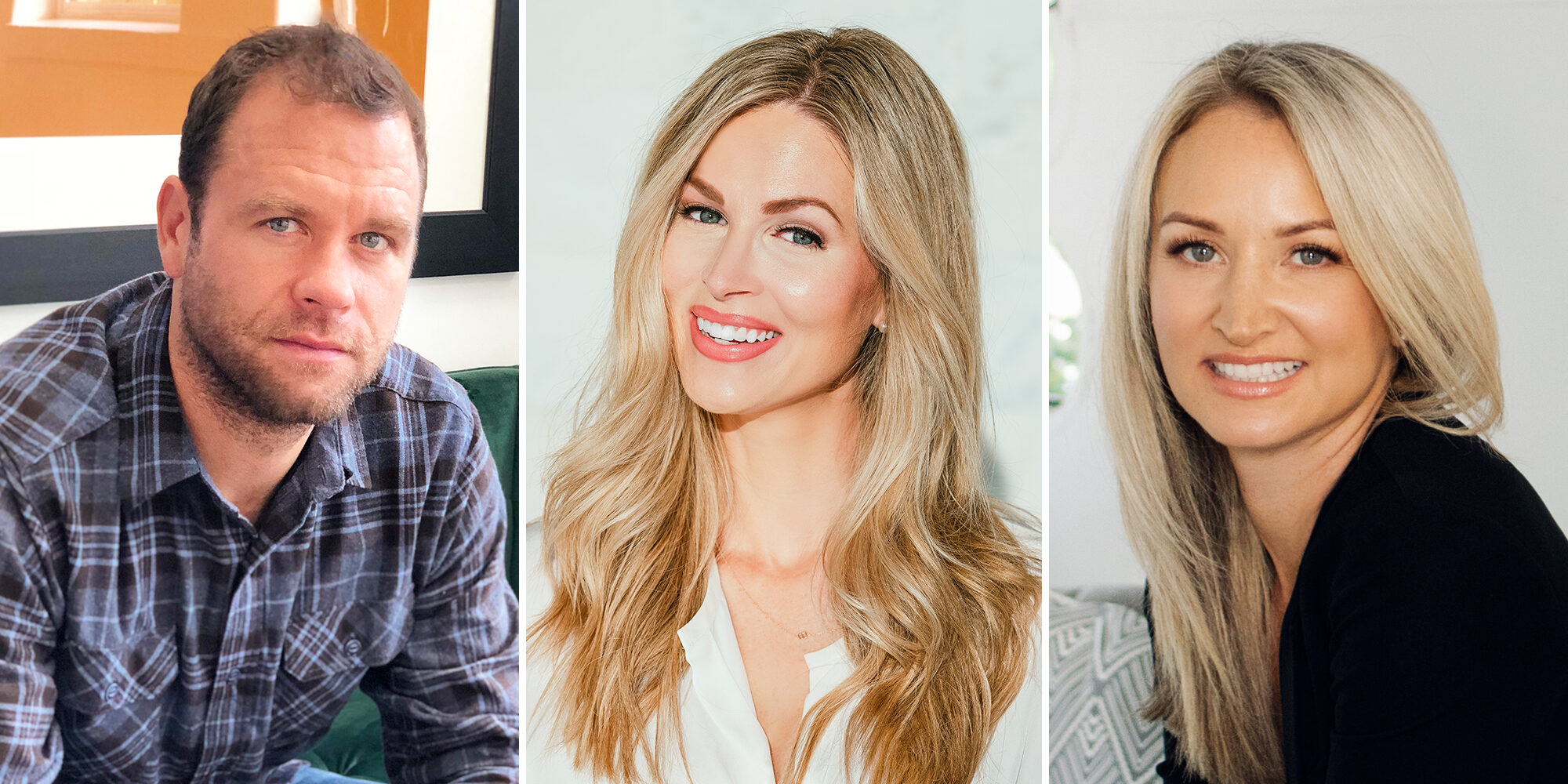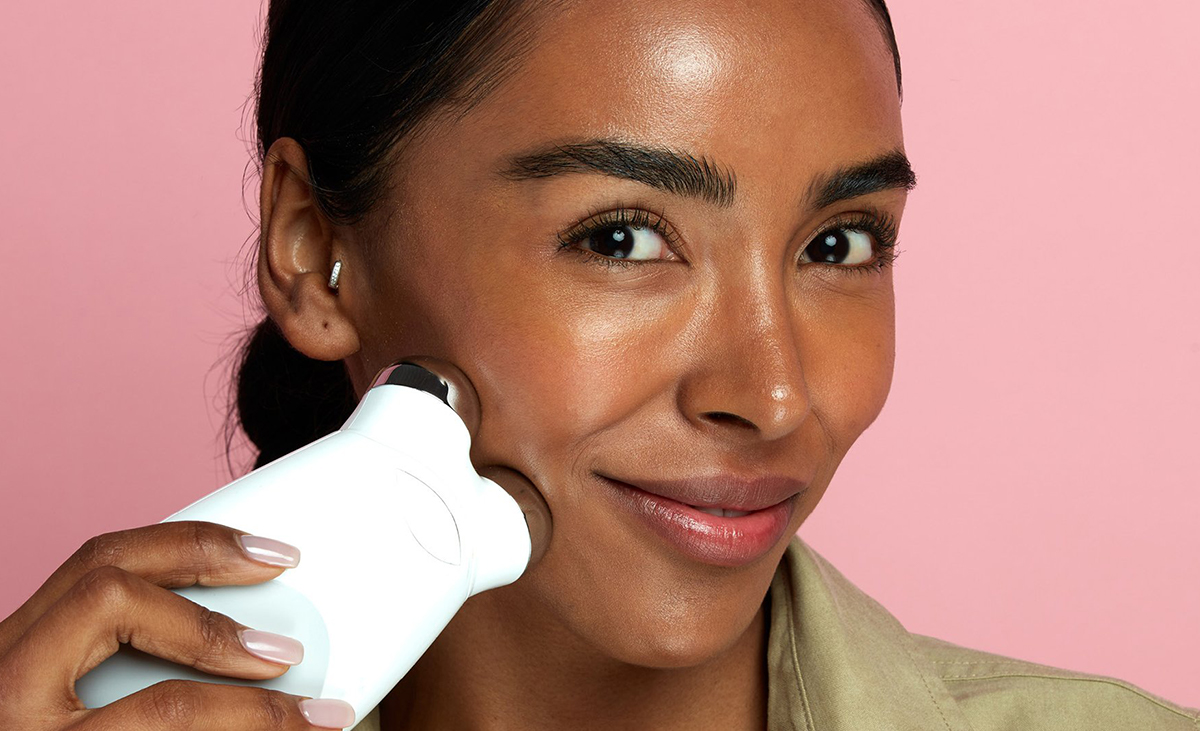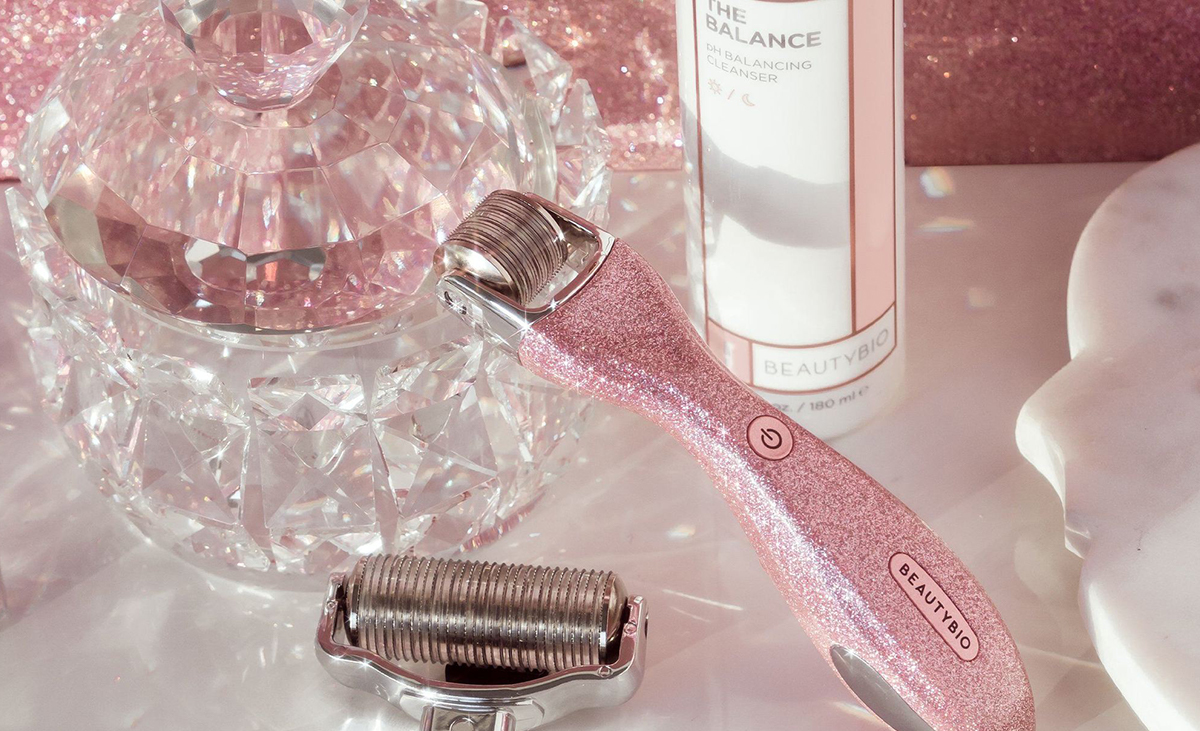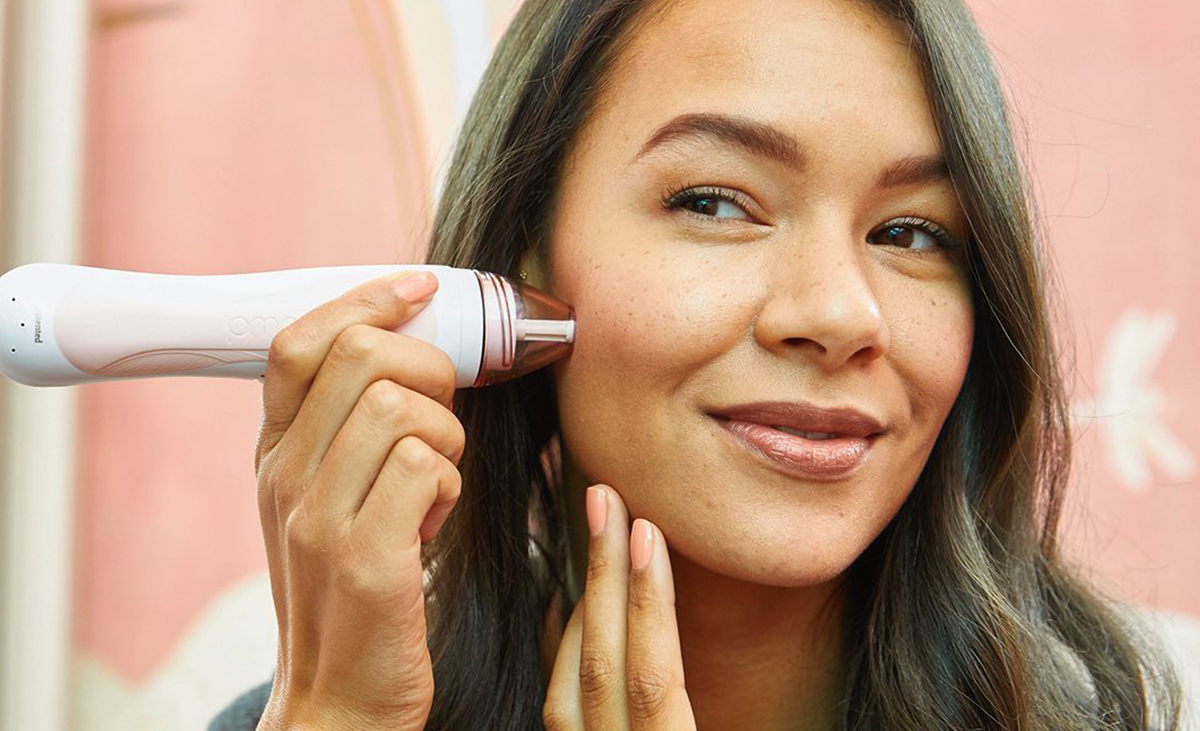
The Entrepreneurs Behind The Skincare Devices That Have Been Pandemic Must-Haves
For every beauty device that’s a bestseller, there’s another that totally bombed.
Even L’Oréal-owned Clarisonic couldn’t hack it in the tough tool segment. In July, the brand, which pulled in $100 million in annual sales a decade ago, revealed it was shutting down following a flood of imitators and an inability to hit upon an innovation as alluring as its sonic facial brush. Clarisonic’s end came at a time of improvement in facial device sales. They climbed 8% in the first six months of 2020 after a 20% drop in 2019, according to The NPD Group. With spas shuttered during the pandemic, skincare devices that promise to deliver spa-like results at home have received a second look from consumers.
The multimillion-dollar device brands PMD Beauty, BeautyBio and NuFace have benefited from a pandemic bump—and they hope to stay front of mind with consumers well beyond this unusual period. The entrepreneurs behind them, Sam Alexander, Jamie O’Banion and Tera Peterson, respectively, joined Beauty Independent’s In Conversation webinar on Wednesday to discuss duking it out with dupes and remaining relevant in a fast-moving market. Scroll down to read highlights from the high-wattage discussion.
Tera Peterson, Co-Founder and Chief Creative Officer of NuFace
Inspiration: In 2005, Peterson co-founded NuFace with her mother Carol Cole, a pioneering microcurrent aesthetician who had been taking her machine from their hometown of San Diego to Los Angeles weekly since the 1980s to service clients. Cole and Peterson recognized clients getting treatments in between professional visits would prolong their results. In 2007, they launched the first hand-held home-use microcurrent device cleared by the United States Food and Drug Administration.
Commercial Strategy: Peterson and Cole started by targeting the professional channel rather than retail. As aestheticians, they felt it was a natural starting point. Suiting professional diligence, they spent hundreds of thousands of dollars on clinical studies to back up claims. “You can’t BS the dermatologist or the plastic surgeon,” said Peterson. NuFace’s biggest task was educating aestheticians, doctors, nurses and even front desk staff so they could effectively tout the benefits of at-home use to clients. “It is a challenge to change consumer behavior, incorporating an at-home device is essentially changing the behavior of a client,” said Peterson. Breaking up the study findings into bite-size pieces helped consumers and professionals alike grasp the concept. Currently, NuFace is sold at more than 3,070 retail doors and 2,000 spas in in more than 35 countries.

Key Takeaways: Peterson suggested data is what sets devices apart from one another. She advised brands to spend money on testing, and double down on the education about why devices can take skincare to the next level and are a complement to, rather than replacement for, topical skincare. NuFace’s devices are paired with a topical activator to carry the current to muscles. The topical activator also encourages replenishment. Amid the pandemic, NuFace’s business has experienced triple-digit growth. To engage customers in digital environments, the brand is creating how-to videos and showing before-and-after photos “Our current clients tell us they want more from NuFace,” said Peterson. Currently, about 85% of the brand’s sales are through e-commerce, a big shift from its start in the professional space. Peterson emphasized there isn’t a magic bullet to success. “Nothing happens overnight,” she said. “If it does, it is going to leave as quickly as it came, and we have seen this specifically in at-home devices.”
Jamie O’Banion, Founder of BeautyBio
Inspiration: O’Banion developed her passion for the beauty business by watching and eventually working alongside her physician and biochemist father Terry James formulate for prestige and professional skincare brands. She learned quickly that many brands put out formulations with minimal active ingredients but maximal claims. That practice didn’t sit well with her. O’Banion decided she and James could do better. After launching Beauty BioScience with a retinol system in 2011, they followed up a year later with GloPro, a patented at-home microneedling tool designed to stimulate skin and help topicals absorb better. The brand is now called BeautyBio and sold globally at prestige retailers such as Sephora, Bergdorf Goodman, Neiman Marcus, Nordstrom and Harrods. It’s available on QVC and HSN, too. Industry sources told Glossy the company’s sales were in the neighborhood of $110 million last year. The business is split evenly between topicals and tools.
Commercial Strategy: O’Banion has leveraged an omnichannel approach supported by QVC’s and HSN’s ability to build brand awareness. She relies on demonstrable moments to connect with consumers in order to sell through 46,000 GloPro units—an amount worth $9 million in sales—in 24 hours on the shopping channels. O’Banion pointed out that visual mediums like television are particularly valuable in selling devices. “If it doesn’t make you put down the vacuum and walk over to the TV, it’s not ready,” she said, adding, “No one woke up that morning saying I need to GloPro or whatever else that day…It is critical that you create a visual moment.” O’Banion asserted, “There is a massive opportunity in the democratization of clinical-grade results from home.”

Key Takeaways: Copycats are par for the course in the device category. BeautyBio holds a patent on microneedling and still sees knockoffs every day. “It is really important to build an intellectual property mote around your technology so it isn’t replicable if you can,” recommended O’Banion. She continued that focusing on building brand loyalty rather than harping on the benefits of a tool can protect a device brand’s idea from lower-priced or off-brand competitors.
Sam Alexander, CEO and Founder of PMD
Inspiration: Prior to PMD, Alexander worked for a dermatologist in Salt Lake and then became CMO for Fringe Media-owned platforms SkincareRX, Apothica and Skinbotanica in 2007 selling physician-grade skincare online. He honed his expertise in SEO and digital marketing, and helped grow the company’s monthly sales to $2 million and expand its assortments from 100 stockkeeping units to more than 20,000, including skincare gadgets. Looking to spread his wings, Alexander became a co-owner of PMD Beauty in 2010. The brand’s products are available globally in retailers like Nordstrom, Sephora and Harrods. It’s extended beyond its namesake Personal Microderm Device to more than 20 products.
Commercial Strategy: PMD has harnessed customer advocacy of its products to land retail deals. In 2010, the brand had just 1,700 personal microderm devices manufactured and sent 500 of them to mommy bloggers long before influencer marketing was commonplace in the beauty industry. Initially, the strategy was about getting linkbacks to PMD’s website to drive SEO, but the bloggers genuinely loved its tool and began giving it rave reviews on their blogs, which bolstered sales in a big way. From then on, PMD leaned into product seeding and embraced YouTubers in 2014. The buzz the brand generated, including a shoutout on The Dr. Oz Show, sealed the deal for a partnership with Neiman Marcus.

Key Takeaways: Like O’Banion, Alexander touts the effectiveness of selling highly demonstrable tools by showing real-time results like sloughing off dead skin through visual mediums such as social media. “It lures you in,” he said. “You can create content that shows what it’s going to do for the consumer.” He added, “And you can create a really strong sales pitch around that show.” Between 20% and 30% of PMD’s profits are devoted to digital marketing. Facebook and Instagram advertising make up the largest line items in the brand’s marketing budget.
Alexander explained skincare devices yield healthy margins, but the brands behind them often run into trouble because they don’t spark replenishment. He elaborated they make devices that can last two years or more and must pursue strategies to supplement device income with, for example, replacement disks or heads. Despite the difficulties of the device segment, brands are pouring into it. Alexander doesn’t fear competition. “I’ve never looked at other skincare tools as being a worry,” he said. “The more skincare tools there are to educate the consumer is helpful. The market actually does grow larger.”





Leave a Reply
You must be logged in to post a comment.